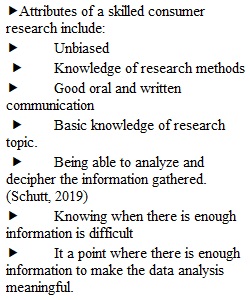


Q Competency In this project, you will demonstrate your mastery of the following competency: • Analyze the benefits and drawbacks of collecting various types of data Scenario You have recently applied for another position in the company you work for and have been called in for a second interview! For this round, you’ve been asked by the interview committee to present an analysis of the collected data from the research you initially reviewed, with a specific focus on data-collection types. This will be presented in a formal interview presentation. Directions Second Interview Presentation You are analyzing studies related to a research topic in your field by discussing different types of data collection, their benefits and drawbacks, and how your chosen research studies utilize different collection methods. In your first project, completed in Module Four, you completed your initial analysis of the methodologies used. In your second milestone, also submitted in Module Four, you finalized your research choices by submitting two of each type of research methodology and flexing your “skilled consumer of research” skills by looking at your gathered research as a whole in order to identify patterns in data-collection types and some high-level credibility threats to the research. For this project, complete the following: 1. Describe the attributes of a skilled consumer of research. Include the following: 1. The most helpful perspectives a consumer can utilize 2. A description of how you know when you have enough information 3. A description of how you scrutinize the credibility of data 2. Identify multiple potential threats to the credibility of your research results for each of your selected research studies. Include the following: 2. A description of potential biases or perspectives that might threaten the credibility of the results 3. An explanation of ethical issues that might threaten the credibility of the results—consider the following: 2. Disclosure 3. Blind or double-blind studies 4. Cultural awareness 5. Humane treatment of subjects 6. Unethical structuring of studies (methods, selection, etc.) 3. Analyze the relationship of data-collection types to social science research methodologies. Include the following: 3. The most commonly used quantitative data-collection types in social sciences (Why are they so common?) 4. The least commonly used quantitative data-collection types in social sciences (Why are they not as common?) 5. The most commonly used qualitative data-collection types in social sciences (Why are they so common?) 6. The least commonly used qualitative data-collection types in social sciences (Why are they not as common?) 4.Explain the relevance of various data-collection types to research question(s). Include the following: 4. A classification of the data in each study—is it quantitative, qualitative, or mixed methodology? Be sure to include an example of each methodology. 5. An explanation of why this data-collection type fits well with your research question
View Related Questions